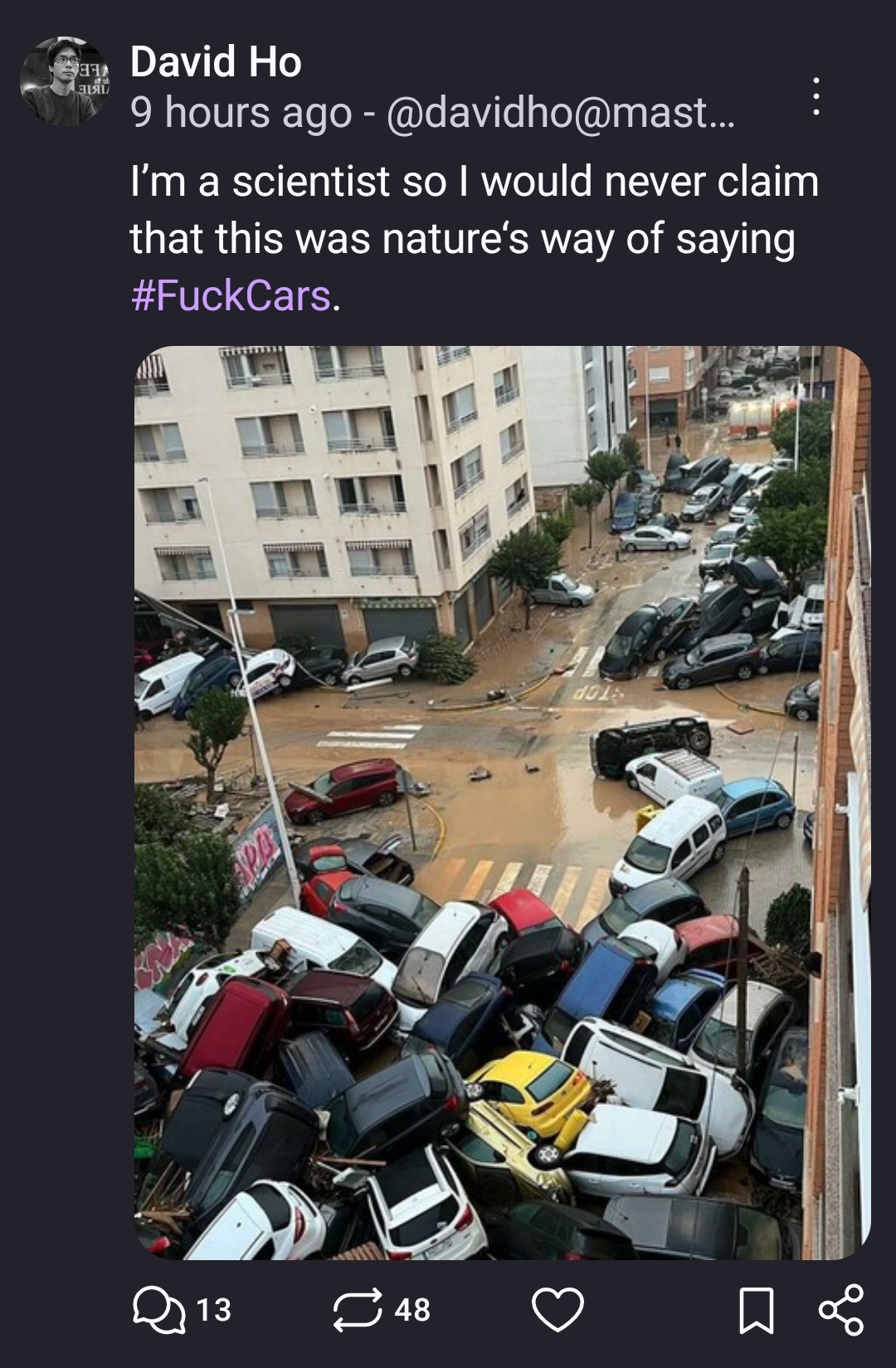this post was submitted on 31 Oct 2024
315 points (85.6% liked)
Microblog Memes
5697 readers
4359 users here now
A place to share screenshots of Microblog posts, whether from Mastodon, tumblr, ~~Twitter~~ X, KBin, Threads or elsewhere.
Created as an evolution of White People Twitter and other tweet-capture subreddits.
Rules:
- Please put at least one word relevant to the post in the post title.
- Be nice.
- No advertising, brand promotion or guerilla marketing.
- Posters are encouraged to link to the toot or tweet etc in the description of posts.
Related communities:
founded 1 year ago
MODERATORS
you are viewing a single comment's thread
view the rest of the comments
view the rest of the comments

It is however a natural consequence of the fact that cars are fucked
It's more to do with the fact that we've paved over every permeable surface with concrete, be it for cars, buildings, walkways.
We need to stop doing that. Focusing on cars exclusively as the problem rather than the problem being an urban design one in general side steps the actual issue.
Roads and buildings are typically the main impermeable surfaces. Sidewalks can be made of more permeable materials because they don't need to handle nearly as much weight, tram lines only really need the rails, everything else can be permeable.
Buildings can be built to either collect their rainwater for later use, or funnel their rain water directly to sewers, reservoirs, or directly into the ground. Buildings also tend to be more beneficial to society per square foot of land than roads are.
Cars being the problem and urban design being the problem is practically the same thing, we've deaigned a significantl amount of our urban spaces specifically for cars.
Roads and parking lots are typically the main impermeable surfaces.
I'm including parking garages as parking lots.
Are you claiming buildings to be permeable? Most just shed water away from them and often directly to a road or parking lot. A bulding would need a dedicated stormwater plan, such as a retention pond, to reduce its impacts with impermeable surfaces in urban environments.